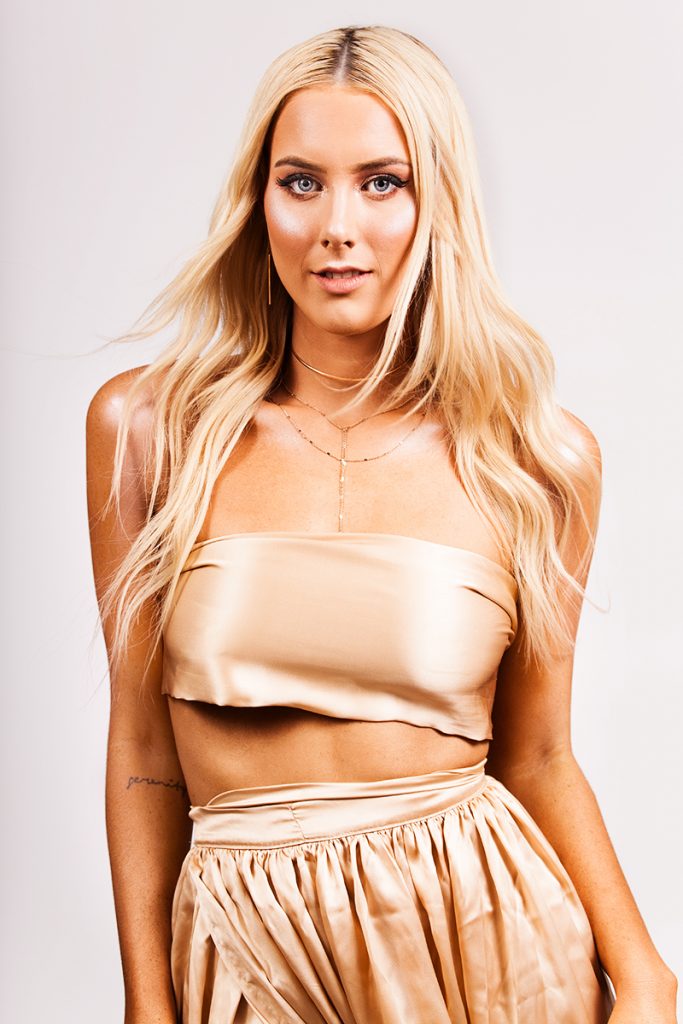The Newbie's Guide to Product Photography
If a picture is worth a thousand words, a spectacular product image is worth a thousand web site check outs. Although I don't have data to back up that statement (yet), product photography can be exceptionally important to your ecommerce website technique.
To reach your target audience members who choose buying online, you likewise need to offer your audience clear, captivating photos of your products.
Yet product photography isn't as basic as aiming and also shooting. Even the most standard products need the proper tools, lighting, as well as room to produce gorgeous images that market shoppers right from the acquisition page.
6 Product Photography Tips ( and also Examples) for Taking Pictures That Offer
Below are the pointers, instances, as well as supplies you'll need to effectively photo as well as market your products in a way that makes your visitors and also potential customers want to convert.
1. Don't be afraid to use your mobile phone's camera.
This is the component where I'm intended to convince you to purchase a premium, 50-megapixel (MP) camera with a 100-millimeter screw-on lens. Yet I'm not going to do that.
If you already possess a cam that fits this summary, make the most of it. However, for numerous types of items, it's completely appropriate to fire product pictures on a smart device.
Newer smart devices flaunt powerful camera lenses and also settings that enable you to maximize your shots for the different kinds of light as well as environments you could shoot in.
If you require much more convincing, just look into Apple's Shot On An iPhone project as well as the images that have resulted from it over the years such as this one:
2. Shoot from a tripod for photo uniformity.
Prior to clarifying tripods, I'm bound to begin with a primary guideline: Do not prop your phone versus something tough to aim your lens toward the subject.
It's simply as well easy for this makeshift setup to move around throughout the shoot and also create disparities in your pictures' look. If you relax your cam on, say, a stack of publications, just make certain this arrangement doesn't transform throughout the shoot.
There's no injury in holding your electronic camera yourself when firing just a few product pictures for your ecommerce site. But as your organization expands, and also you take more pictures of more items, it can be tough to systematize the product's orientation in each photo when shooting handheld.
To guarantee uniformity throughout your items, you'll need a tripod. As well as luckily, acquiring one isn't always the large, industrial-sized investment it made use of to be.

Here are two types of tripods to consider.
Typical vs. Versatile
This is a practice tripod-- there are conventional tripods available for both video cameras and also smart devices.
A fashion photography adaptable tripod can be manipulated in a variety of methods. You can flex its legs and position it on various surface areas to get the angle you need.
Mobile Grip
There's frequently a screw on the top of your tripod which affixes to your electronic camera to hold it in position. The underside of a lot of professional-grade cams has a screw hole just for this objective, but smart devices can use the adhering to adapter:
The adapter grips the sides of your smart device and can screw right into either sort of tripod, permitting you to operate the camera controls with the phone screen facing exterior as well as toward you.
When you determine which mount you'll need, establish it up in front of your product, and consider putting 3 items of tape on the ground to mark where you would love to maintain each leg of your tripod throughout the shoot.
3. Select all-natural light or man-made light.
Never undervalue exactly how certain types of light can enhance (or hinder) your product photography. Bear in mind, purchasers get the most effective look at an product face to face, where they can see everything they require to before buying. The right illumination setup assists you disclose those essential decision-making product features when all internet site visitors need to go on is a photo.
A single lighting setup may not work for every product-- a illumination setup that works for some products might weaken the appearance of others.
There are two types of light you can choose as your major light source: all-natural as well as fabricated light.
All-natural Light
All-natural light refers to sunshine-- simple as that. It's likewise called "soft light" due to the fact that the sunlight casts a bigger, softer series of light than, say, a lamp radiating straight on the product. Ecommerce product shots flourish in all-natural light if:

The product is shot outside or implied to be made use of outside.
The product is used by, endured, or shot with a individual ( individuals tend to look far better in all-natural light).
You're trying to highlight the product's surroundings, as opposed to certain characteristics of the product.
Right here's an instance of a shot making use of natural light:
Fabricated Light
Man-made light includes candle lights, fire, as well as more typically, light bulbs. It's also referred to as " tough light" because it generates a smaller yet extra concentrated light surface area. This type of light satisfies products with physical details that need to be highlighted to thrill an on the internet customer.
As a general policy, adhere to just one kind of light per photo-- all-natural or man-made. Adding all-natural light to an synthetically lit photo can soften a product that's meant to festinate, and including fabricated light to a naturally lit photo can hone a product that's suggested to look soft. You don't intend to enter your own method.
4. Load or jump your light to soften darkness.
Whether you use all-natural light or fabricated light, you'll require to reduce the shadows that any possible difficult light casts on the opposite end of a product.
There are 3 ways to do this:
Load Light
Include an additional, less-intense light source to supplement your primary light. This additional light is called your fill light and also is made use of as a counterbalance to soften the all-natural shadow your major light creates behind an item.
To do this, put your fill light contrary your major light so your product sits in between both source of lights.
Flashbulb Bounce Card
A bounce card, or reflector card, is a tiny card that " shows" or " jumps" the primary light back onto the surface area underneath your product to lower darkness.
Some bounce cards attach to the flashbulb of a specialist camera lens to diffuse the light from the video camera's flash. This card sprinkles a softer light onto the topic from above your collection-- as opposed to straight at it-- so you don't have lengthy shadows trail behind the object you're firing.
Standalone Bounce Card
If you're firing from a smart device, a flashbulb bounce card isn't an alternative, because you don't have a physical flash you can affix it to. Rather, make your own standalone bounce card placed opposite your primary source of light.
For newbies to product photography, this bounce card can properly change your fill light, which counters the hard light from the electronic camera flash or lamp that's facing towards the front of your product.
5. Make use of a move or portrait mode to stress the product.
There isn't one best method to place your product, lights, and also jump cards-- they can change considerably relying on your background. But do not pick a background based upon what's most convenient to produce. Histories ought to appear like just how you want your purchasers to perceive your product when seeing it online.
Consider initially whether you 'd like a white background or a extra dynamic, real-world history. There's an simple method to achieve each one.
White History: Move
For white histories, it's not as easy as establishing a table against white drywall. Even smart device cams can pick up little acnes on a white wall surface that you wouldn't notice with the naked eye. To capture a perfect white history without edges or acnes, use a move.
A sweep is a huge flexible sheet of paper, whose bottom function as the surface beneath your product and then contours up right into a white wall surface behind the product.
On cam, the sweep's curve is undetectable, emphasizing key product details and enabling the thing to own every one of a web site visitor's interest.
Real-World Background: Picture Setting
Dynamic, real-world histories are very enticing when capturing items that have a details usage or are being modeled by a individual-- as you saw aware of the brief-case previously in this guide.
Yet, it's easy for a real-world history to swipe the focus of the photo, making it uncertain which product in the photo you're really offering.
Offer your product depth as well as focus with portrait mode, a image setup on the majority of professional video cameras, and additionally offered on lots of brand-new smartphones. This setup obscures the background so the context of the product is clear but not competing versus the product itself.
Below is a extremely remarkable photo of a HubSpot pen taken in portrait setting on a Google Pixel 2 (I took this photo myself). You can tell the pen rests on a desk with a computer system behind it, but the pen is still the centerpiece for visitors:
6. Shoot a variety of photos.
My last ecommerce photography idea to you is to not stop at one photo per product. Equally as your consumers look, hold, utilize, as well as also try on product in a store, your internet site should fire a selection of pictures to mimic this extremely experience.
If you're firing garments, for instance, record the garment of garments alone-- that is, expanded on a white surface-- in addition to on a mannequin whose shade contrasts the color of the product.

After that, for extra photos, have the apparel modeled on a individual, allowing you to take images of the product from the person's various positions and angles.
Product Photography Set Up
Next off, allow's summarize what we just obtained-- below's a listing of quick product photography set-up suggestions that you can refer to and also share on your group:
• Decide on a video camera-- whether that suggests using your smartphone.
• Get a tripod that helps your electronic camera of choice.
• Pick all-natural or man-made illumination-- think about which option is best for your product and atmosphere.
• Determine whether you'll fill up or bounce light.
• Select sweep or picture mode.
• Take several various photos to offer your visitors range.
Start With Your Product Photography
Do not really feel required to purchase every idea as well as piece of equipment simultaneously. Apply these product photography ideas progressively to see what makes your shop look one of the most presentable, and alter your method as your photography chops get better.